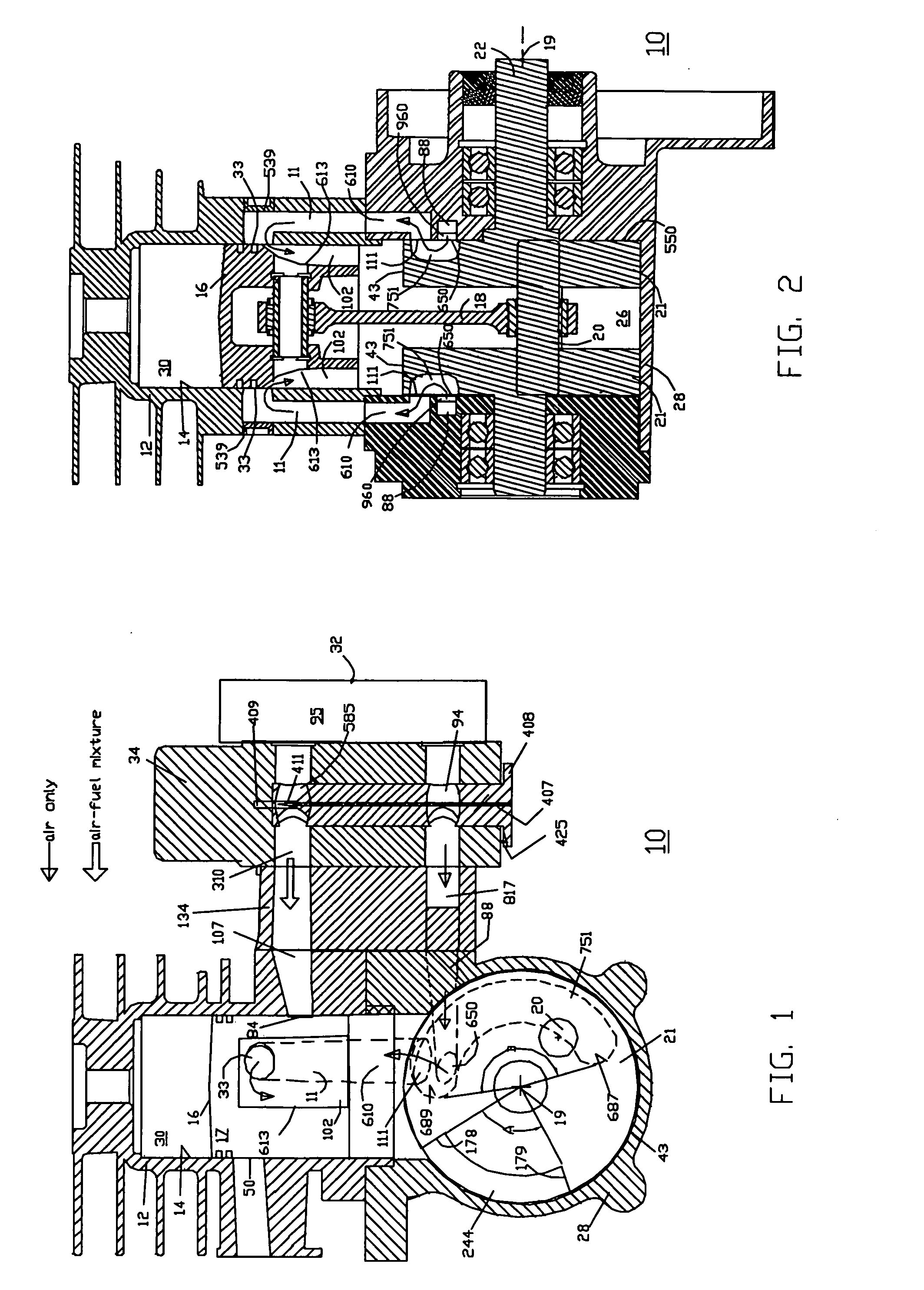Stratified scavenged two-stroke engine
a two-stroke engine and scavenging technology, applied in combustion engines, valve arrangements, engine controllers, etc., can solve problems such as delay in opening
- Summary
- Abstract
- Description
- Claims
- Application Information
AI Technical Summary
Benefits of technology
Problems solved by technology
Method used
Image
Examples
Embodiment Construction
[0054] Air-head scavenged engines provide a buffer medium of air between the fresh charge and the burned gas during the scavenging process. When the transfer ports open, the air enters the combustion chamber first and is most likely to be short-circuited, in the sense a small fraction of air is lost into the exhaust. The air is inducted into the transfer passage during the intake process, when the piston is ascending. Typically, a reed valve is provided at the top of the transfer passages for inducting only air into top of the transfer passages that stays in the transfer passages to act as a buffer medium. In some instances, piston ports are also provided in place of reed valves. The disadvantage with the reed valves is that it adds parts and are speed sensitive and the performance is subject to quality of the assembly of reeds and reed themselves.
[0055] In the exemplary embodiment the rotary valve, which can be a crank web as described in this case, replaces the reed valves. The t...
PUM
 Login to View More
Login to View More Abstract
Description
Claims
Application Information
 Login to View More
Login to View More - R&D
- Intellectual Property
- Life Sciences
- Materials
- Tech Scout
- Unparalleled Data Quality
- Higher Quality Content
- 60% Fewer Hallucinations
Browse by: Latest US Patents, China's latest patents, Technical Efficacy Thesaurus, Application Domain, Technology Topic, Popular Technical Reports.
© 2025 PatSnap. All rights reserved.Legal|Privacy policy|Modern Slavery Act Transparency Statement|Sitemap|About US| Contact US: help@patsnap.com



